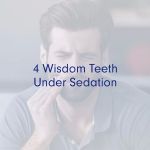- 1-Importance-of-Specialized-Dental-Care-for-People-with-Braces
- 2-Challenges-in-Oral-Hygiene-During-Orthodontic-Treatment
- 3-Effective-Brushing-and-Flossing-Techniques-for-Braces
- 4-Role-of-Professional-Cleanings-and-Orthodontic-Checkups
- 5-Dietary-Considerations-to-Protect-Teeth-with-Braces
- 6-Personal-Stories-and-Expert-Advice-for-Braces-Dental-Care
1. Importance of Specialized Dental Care for People with Braces
Maintaining excellent dental care for people with braces is essential for achieving the best orthodontic results while protecting oral health. Braces introduce additional surfaces and crevices where plaque and food particles can accumulate, increasing the risk of tooth decay, gum inflammation, and white spots around brackets.
Proper care ensures that teeth stay healthy throughout treatment and after braces are removed. Without specialized dental hygiene strategies tailored for braces wearers, patients may experience setbacks such as cavities or gum disease that complicate their orthodontic journey.
1.1 Why Routine Care Isn’t Enough
Unlike natural teeth alone, braces consist of metal or ceramic brackets, wires, and elastics, all of which require extra attention. Standard brushing and flossing routines must be adapted to thoroughly clean around these appliances. Understanding this distinction is crucial for anyone undergoing orthodontic treatment.
2. Challenges in Oral Hygiene During Orthodontic Treatment
The physical presence of braces creates multiple obstacles to maintaining oral hygiene. Food often gets trapped under wires and brackets, fostering bacteria growth and plaque buildup. This environment can quickly lead to gingivitis, enamel demineralization, and bad breath if not managed carefully.
Additionally, sensitivity and discomfort following adjustments can discourage patients from performing adequate cleaning. These challenges highlight the need for targeted education and tools designed specifically for dental care in people with braces.
2.1 Increased Risk of White Spot Lesions
White spot lesions, which are early signs of enamel decay, are a common complication during orthodontic treatment. These spots develop when plaque acids attack enamel around brackets, and can sometimes be permanent if not addressed promptly. Effective cleaning and fluoride use help prevent these lesions.
3. Effective Brushing and Flossing Techniques for Braces
Proper brushing for braces wearers involves using a soft-bristled toothbrush or electric toothbrush with orthodontic heads to reach around brackets and wires. Patients should brush after every meal, spending extra time on areas where food debris collects.
Flossing requires tools such as floss threaders, interdental brushes, or water flossers to clean between teeth and beneath wires. These methods facilitate removing plaque from hard-to-reach spaces and reduce inflammation risks.
3.1 Step-by-Step Cleaning Routine
Start by brushing at a 45-degree angle to the gum line, then carefully clean above and below the brackets. Use interdental brushes to gently clean between wires and teeth. Finish by flossing using threaders or water flossers to flush debris away. Consistency and patience make a significant difference in maintaining oral health.
4. Role of Professional Cleanings and Orthodontic Checkups
Regular visits to your dentist and orthodontist are vital for monitoring oral health and ensuring braces function properly. Professional cleanings remove plaque and tartar that daily hygiene may miss, reducing risks of gum disease and cavities.
Orthodontic checkups allow for adjustments to wires and brackets to progress tooth movement and address any appliance issues. These appointments are opportunities to receive personalized dental care advice and learn about emerging techniques or products designed for braces wearers.
4.1 Preventive Treatments
Fluoride treatments and dental sealants applied during professional cleanings provide additional protection against decay. Your dental team can recommend the best preventive strategies tailored to your specific needs while wearing braces.
5. Dietary Considerations to Protect Teeth with Braces
Diet plays an important role in dental care for people with braces. Avoiding sticky, hard, or sugary foods reduces the risk of damaging braces and developing cavities. Foods like caramel, popcorn, and chewing gum should be limited or eliminated.
Instead, focus on soft fruits, vegetables, dairy, and whole grains that support oral health without compromising orthodontic appliances. Drinking plenty of water helps rinse food particles and maintain saliva flow, which naturally protects teeth.
5.1 Personalizing Your Diet for Comfort and Health
Some patients experience soreness after adjustments; choosing gentle, nutrient-rich foods during these times supports healing and comfort. Experimenting with smoothies, soups, and cooked vegetables can maintain balanced nutrition while protecting braces.
6. Personal Stories and Expert Advice for Braces Dental Care
Jessica, a teenager from California, shared how her oral hygiene routine evolved after getting braces. Initially overwhelmed, she learned to use an electric toothbrush and water flosser, significantly reducing discomfort and plaque buildup. Her dentist’s guidance and regular checkups kept her motivated and her smile healthy.
Orthodontists emphasize that successful dental care during braces requires patience and adapting daily habits. They also recommend consulting trusted sources like Dentistry Toothtruth for up-to-date products and professional advice tailored to braces care.
By combining expert recommendations with personal commitment, people with braces can enjoy effective dental care that supports both oral health and the beautiful smile they’re working to achieve.







 Loretto Multi-Specialty Dental Center4.0 (111 review)
Loretto Multi-Specialty Dental Center4.0 (111 review) Dr. Matrullo & Associates4.0 (93 review)
Dr. Matrullo & Associates4.0 (93 review) Allied Orthodontics- Academy Road- Dentistry in Philadelphia- Dentist 191540.0 (0 review)
Allied Orthodontics- Academy Road- Dentistry in Philadelphia- Dentist 191540.0 (0 review) Absolute Dental - Lake Mead4.0 (332 review)
Absolute Dental - Lake Mead4.0 (332 review) Aurora Dental Care4.0 (153 review)
Aurora Dental Care4.0 (153 review) West Covina Dental Group and Orthodontics4.0 (274 review)
West Covina Dental Group and Orthodontics4.0 (274 review) The Importance of Oral Health Education During Pregnancy for a Healthy Pregnancy
The Importance of Oral Health Education During Pregnancy for a Healthy Pregnancy Best Tips for Brushing Your Teeth Properly for Healthy Gums: Essential Techniques for Oral Health
Best Tips for Brushing Your Teeth Properly for Healthy Gums: Essential Techniques for Oral Health Why Skipping Dental Checkups Can Lead to Bigger Oral Health Problems
Why Skipping Dental Checkups Can Lead to Bigger Oral Health Problems Advantages of Porcelain Dental Restorations
Advantages of Porcelain Dental Restorations How Can Diabetes Cause Tooth and Gum Problems? Preventing and Managing Oral Health Issues
How Can Diabetes Cause Tooth and Gum Problems? Preventing and Managing Oral Health Issues Healthy Habits for Promoting Good Oral Health and Hygiene: Tips for a Healthy Smile
Healthy Habits for Promoting Good Oral Health and Hygiene: Tips for a Healthy Smile